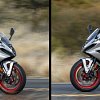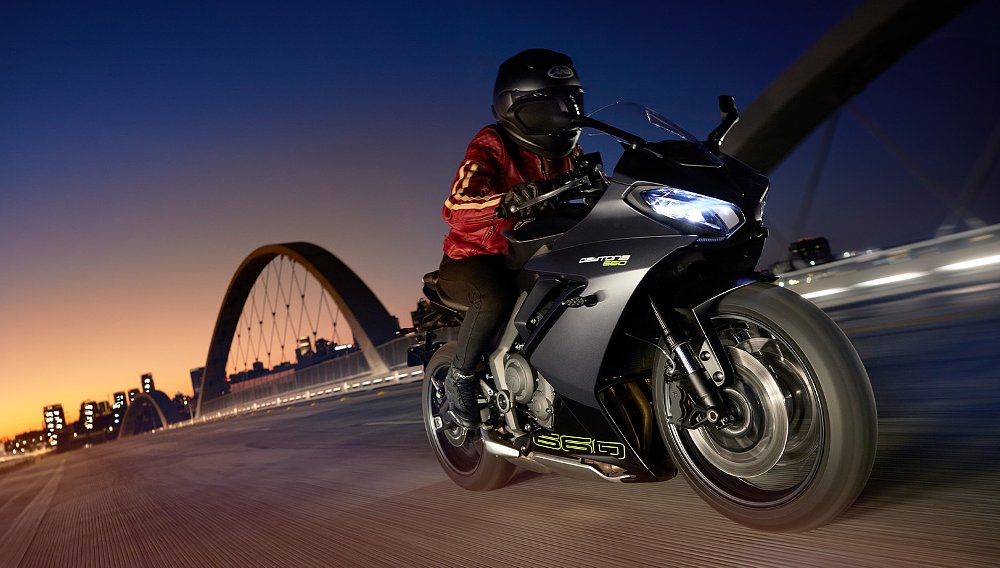The relationship between sport bikes and naked bikes used to be so simple. Take your favorite supersport, strip away its fairings, bolt on a handlebar, and presto, you have a naked sport bike. One very prominent exception to that rule was Suzuki’s SV650S, and the brand’s newest sport bike, the GSX-8R, follows in its forefather’s footsteps.
As today’s consumers purchase more street-focused standards and fewer race-bred rockets, manufacturers are developing sport bike models based on naked bike platforms. In Suzuki’s case, it starts with its GSX-8S, clothes it in a Gixxer-inspired fairing, and bolts on clip-on-style handlebars. Presto, we have the 2024 GSX-8R.
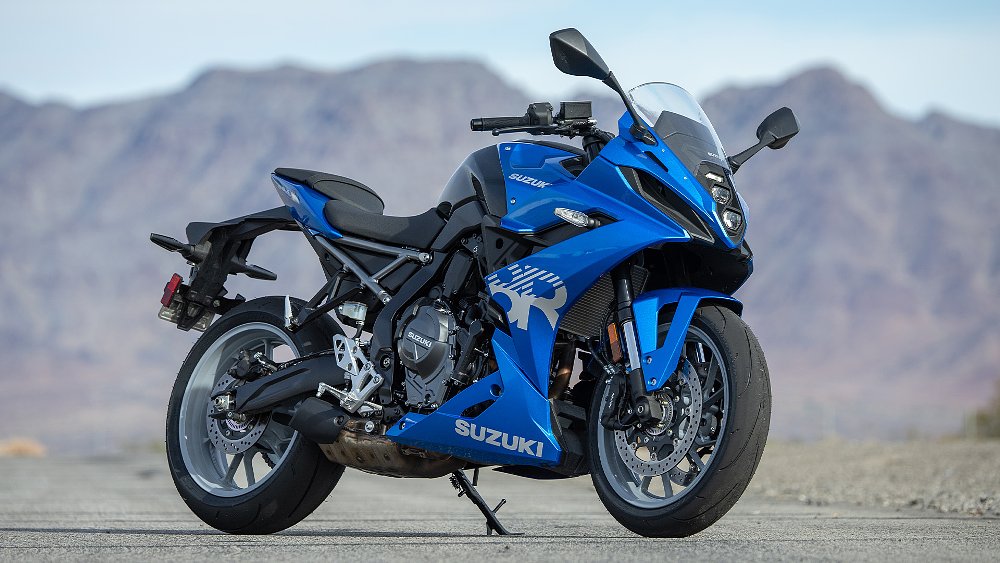
Tasked with toeing the line between “city comfort” and “sport performance,” Suzuki deems its naked-derived sport bike the “new standard of sport.” At least that’s how the model was positioned at its press launch in California’s Coachella Valley.
Let’s unpack that
To present its new shiny toy in full detail, Suzuki flew in eight GSX-8R project leads from Japan to participate in the the 90-minute, 110-slide presentation. From engineering to styling, from handling to electronics, no stone (or wiring harness) went unturned. Our motley crew of moto journalists learned everything there is to know about the new GSX-8 entry. Most of all, how much the House of Hamamatsu is pinning on the sport bike’s success.
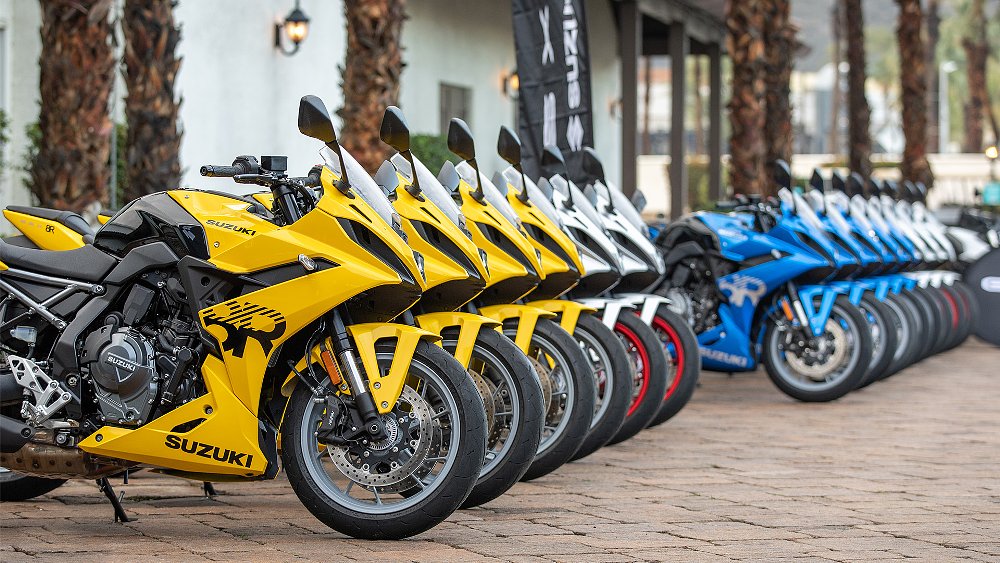
That detail was laid bare when Assistant Chief Engineer Shunya Togo took the dais. I’ll admit that the Japanese presentation style is oddly endearing. Beyond professional qualifications, each team member revealed a fun factoid about themselves (apparently, Test Rider Yosuke Sato loves cats) and wrapped up their spiel with a courteous, “Thank you for your attention.” That’s why it was so jarring when Togo-san ended his slides with, “Please give it [it being the GSX-8R] a good review.”
While such candidness is appreciated, my desire to maintain journalistic integrity means it's not that simple. What I can concede is that the GSX-8R has the potential to meet Suzuki’s expectations — flaws and all. Let’s unpack that.
Road warrior
It’s often said that the engine maketh the motorcycle. If that’s so, it’s no wonder the 8R is such a versatile package. When Suzuki debuted its 776 cc parallel twin in the V-Strom 800DE and GSX-8S, it impressed more with its accessibility than its excitability. The engine’s 270-degree crankshaft provides the power pulses expected from a modern p-twin, while dual counterbalancers subdue the resulting vibrations. It’s basic by all means, but by no means is basic bad.
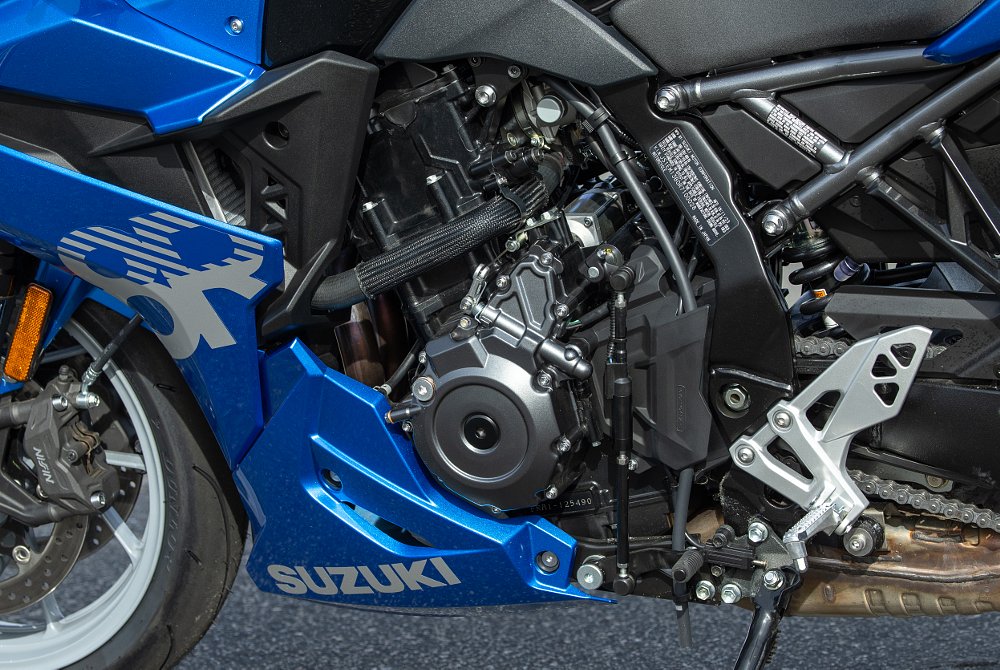
Suzuki doesn’t fix what isn’t broken. In the GSX-8R, the mill maintains the same state of tune from the 800DE and 8S. That includes its 81.8-horsepower rating. However, the twin’s torque provides an immediate thrill, piling on from the initial throttle crack and only trailing off after its claimed peak of 57.5 foot-pounds at 6,800 rpm while horsepower steadily gallops up to its 8,500-rpm summit. With such a linear power profile, the engine is less of a Quarter Horse and more of a work horse. It’s that mix of low-down pull and sensible acceleration that keeps the 8R engaging yet unintimidating.
The p-twin’s amiable nature helps Suzuki cast the GSX-8R as a “bike of different purposes” — commuting and sport-touring included. Covering over 100 miles of backroad highways put the model’s travel ambitions to the test and its ergonomics passed with flying colors. The 8R carries over the 8S’s 31.9-inch seat height and low footpegs, but its yoke-mounted “clip-ons” are 2.3 inches lower and 0.2 inches further forward. That new touchpoint pulls the rider over the tank, but only slightly more so than the GSX-8S.

Most importantly, my grip on the clip-ons remained light and relaxed. Without weight bearing down on wrists and shoulders, stretching routines and popping joints didn’t dominate our rest stops. (More time for snacks. Hooray!). Ample leg room only contributed to the cause, with my knees at a near-90-degree angle and my tuchus resting flat on its sit bones. It’s that naked-bike-like rider triangle that makes 8R so appealing, but its fairing also staves off fatigue. Instead of deflecting all wind away from the rider, Suzuki designers stabilized the oncoming air with strategically placed inlets in the bodywork. The results were largely successful. Though the short windscreen directed wind to my clavicle area, the airstream was far from turbulent. With clean air passing over my shoulders and helmet, neck pain was nil.
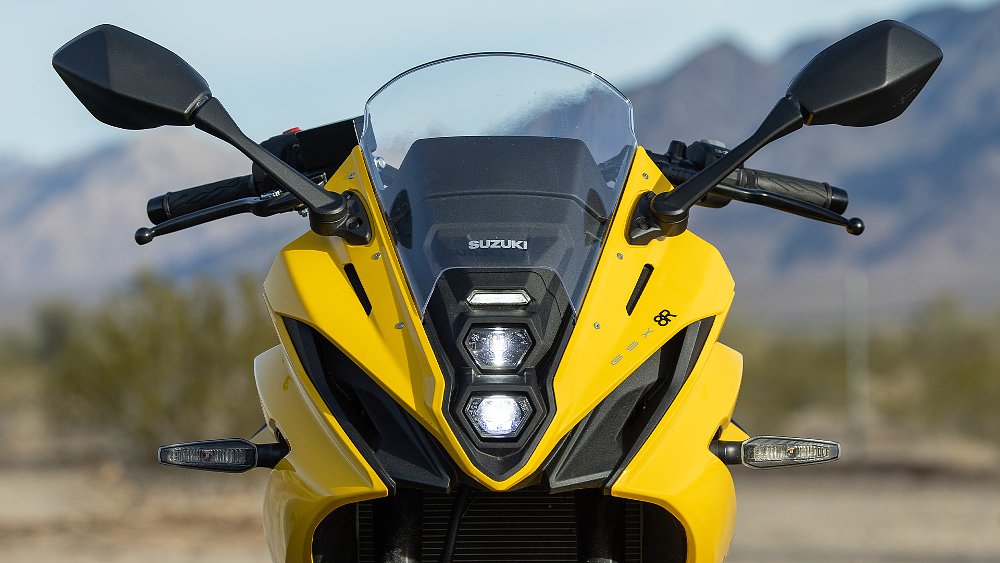
Smooth sailing may be the 8R’s forte, but it suffers one major fault. Suzuki fails to complement its smooth-cruising engine with cruise control. It’s difficult to sell the multi-purpose sport bike as a part-time sport-tourer and daily commuter without that crucial feature. Especially when the GSX-8R offers selectable ride modes and throttle by wire, omitting cruise control seems like a grave oversight by the Japanese OEM. I don’t think I’m alone in my disappointment. Fortunately, Suzuki isn’t as penny-pinching (just barely) with the model’s other rider aids.
Plain and simple
It’s worth reiterating that basic isn’t bad, and the GSX-8R’s tech suite proves as much. The ride modes, just three, include A (Active), B (Basic), and C (Comfort). Traction control also offers three levels along with the option to disengage it altogether. Everything you need, nothing you don’t. That simplicity streamlines changes on the go. Sure, users need to roll off the throttle before switching either setting, but with controls comprised of a single Mode button and an up/down rocker, that process is straightforward and swift.
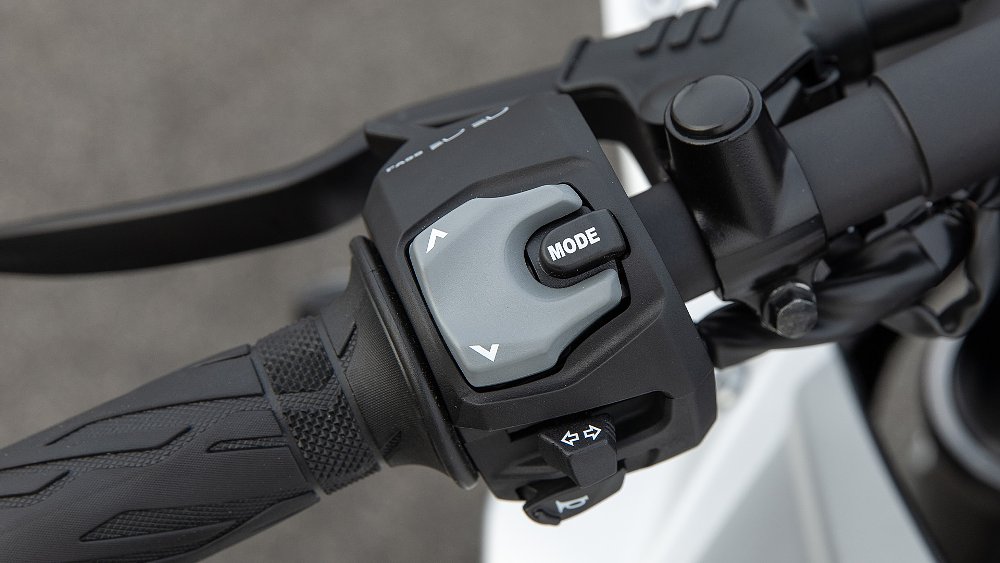
The model’s five-inch TFT aids in those instances. Featuring an analog-style tachometer, oversized speed readout, and a large gear indicator, clarity ranks high on the dash’s priority list. The screen doesn’t wow with snazzy graphics. It’s neither the sharpest nor the largest display either. It is, on the other hand, one of the easiest interfaces to navigate. With the current ride mode and traction control positioned just right of center, adapting the 8R’s settings is a glance and a few button presses away. Easy-peasy.
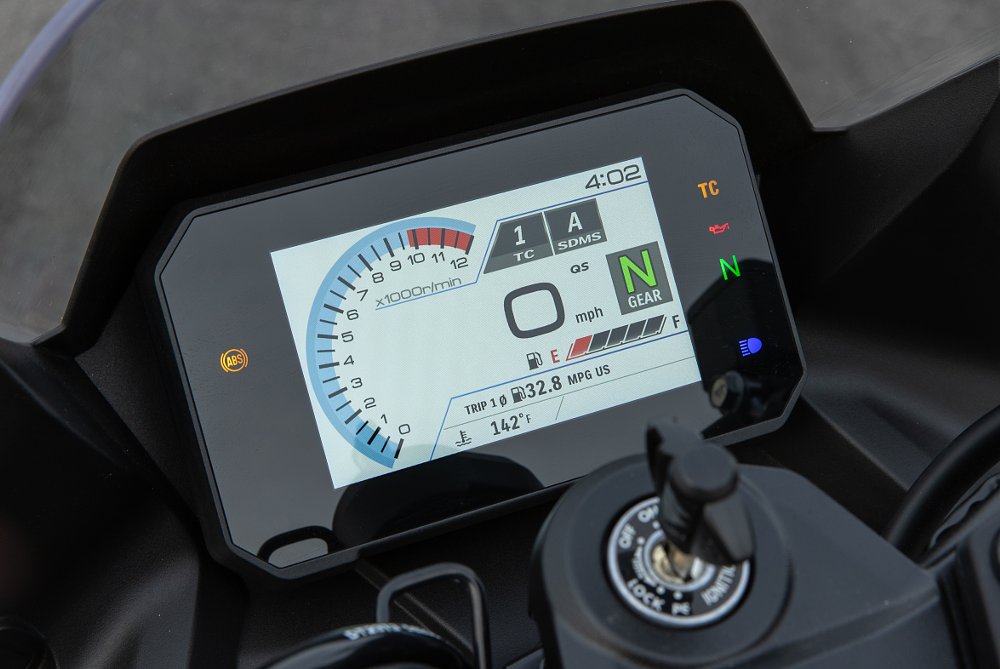
Thunderstorms passed through the Southern California region the day before my first dance with the GSX. By the morning, only wet pavement and light showers remained. As the roadways dried throughout the day, switching from mode A to B to C, from TC 3 to 2 to 1, hardly disrupted the ride experience. In many situations, users will set and forget the rider aids. A track day is likely one of those situations.
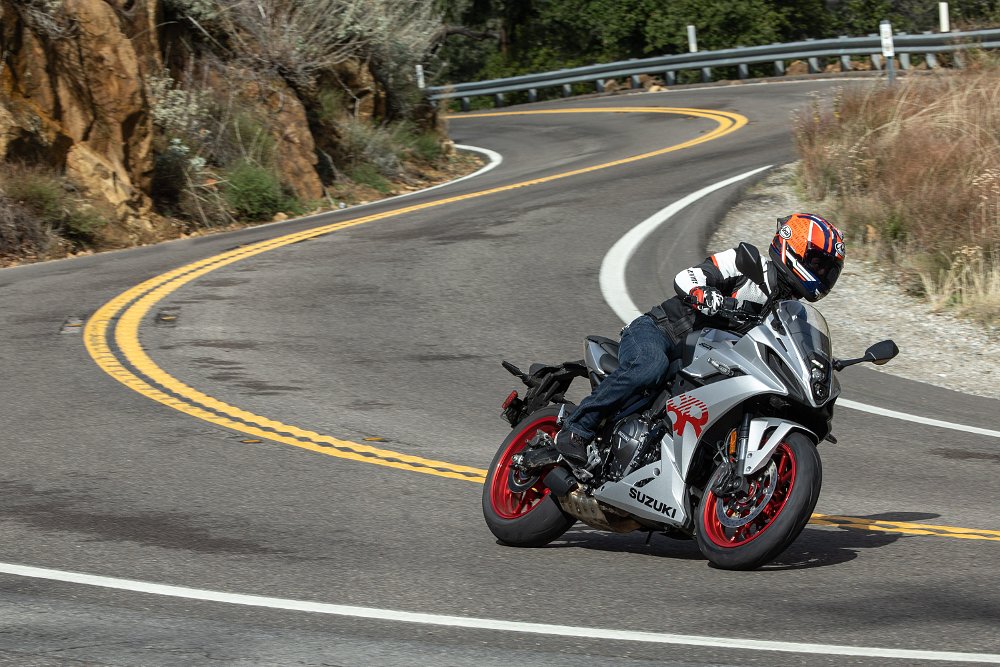
Double duty
Suzuki hosted the second day of the GSX-8R launch at Chuckwalla Valley Raceway. To cope with the higher speeds and lean angles achieved on track, the brand replaced the stock rubber with Dunlop Sportmax Q5S tires. Its stickier compound not only unlocked the 8R’s performance potential but also complemented the sport bike’s true advantage: upgraded suspension.
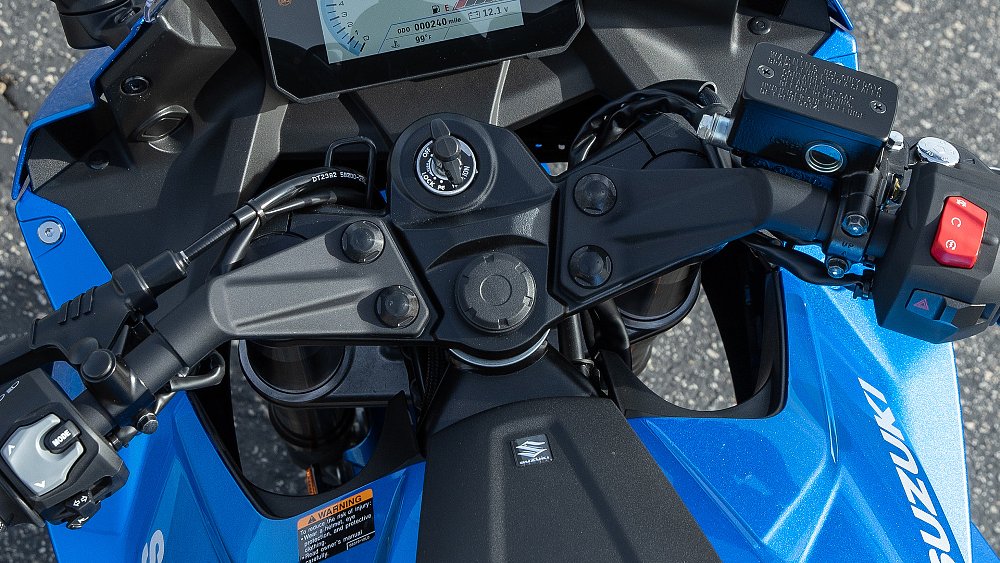
While the 8S employs a KYB front end and link-type shock, the faired affair springs for a monoshock and a separate-function fork from Showa. The spec sheet lists both the KYB and Showa fork tubes at 41 mm in diameter but Showa’s fork legs expand toward the center, forcing Suzuki to fashion a new lower triple tree for the 8R. That detail aligns with the team’s goal of improving the front end’s rigidity, and therefore, its track worthiness.
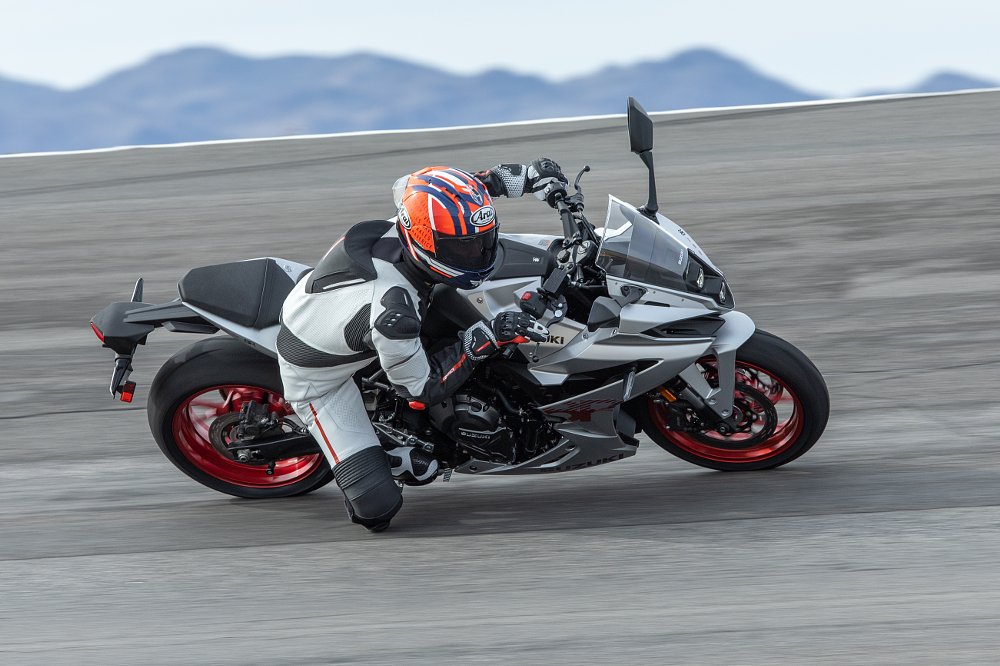
The chassis remained composed around all of Chuckwalla’s 17 corners. Dive under heavy braking wasn’t excessive. Neither was squatting under acceleration. The latter is no surprise with less than 82 ponies at the ready, but the twin Nissin calipers reliably shed speed without overwhelming the front end. Even if feel at the lever was predictably vague (by track standards), overall stopping power and brake fade never presented a problem. At least not around the throttle-happy Chuckwalla circuit. It’s a different story for the 8R’s other road-biased preparations.
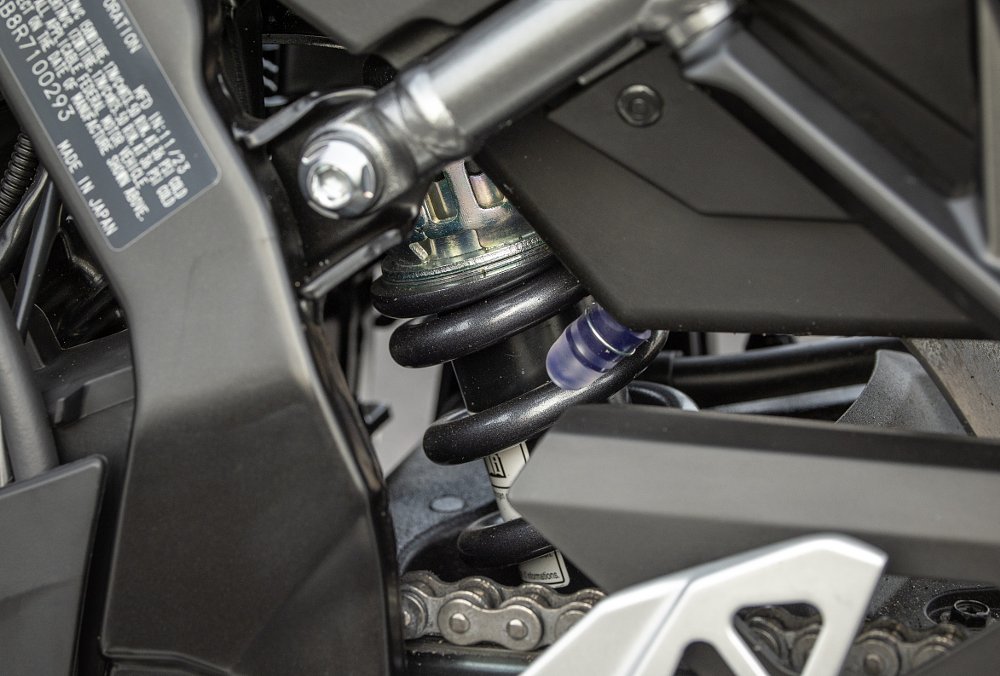
While the model’s fairing provided enough shelter from the elements on the highway, it wasn’t as aerodynamic on the back straight. In a full tuck, my eyes still peered over the lip of the windscreen, not through it. Wind streaming through my helmet was often audible too. Mind you, I wore earplugs during every session. No doubt, the cockpit’s limited front-to-back space contributed to the issue, but a taller screen would also improve the sport bike’s track aero.
The 8R’s low-mounted footpegs also present issues on the circuit. Chiefly, ground clearance. Of course, your individual riding style will determine when/if those pegs touchdown on the tarmac. For instance, I only scraped the right peg while negotiating Chuckwalla’s technical turn 16, while fellow journalists ground the stock pegs to nubs by mid-day. I’m in no way advocating for a particular style. You can clock fast lap times with either method. I’m simply stating that peg mileage may vary based on your form.
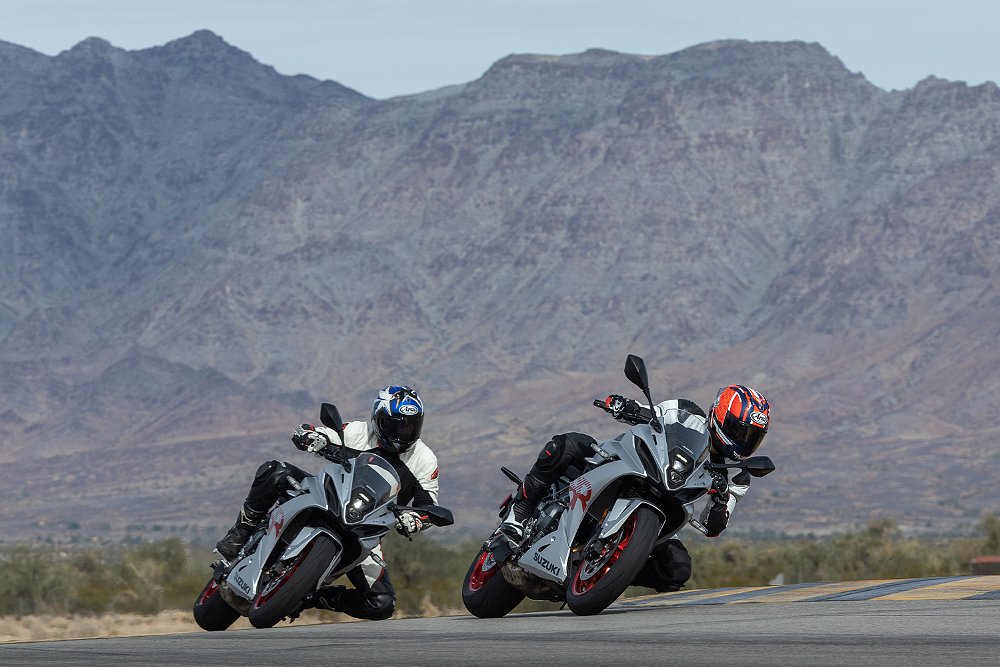
My final nugget of feedback also concerns body position. While transitioning from one side of the bike to the other, I kept sliding too far across the GSX-8R’s smoothly finished tank. If I had true track ambitions for the road-going sportbike, I’d immediately install tank pads. I’d even consider reupholstering the seat with gripper fabric, as the stock material is awfully slick against race leathers.
Despite those detractions, the GSX-8R is a competent tool on the track. It’s far from the fastest, nimblest, or technologically advanced sport bike available, but it knows its place in the market and sticks to it. That can’t be said for all the 8R’s rivals.
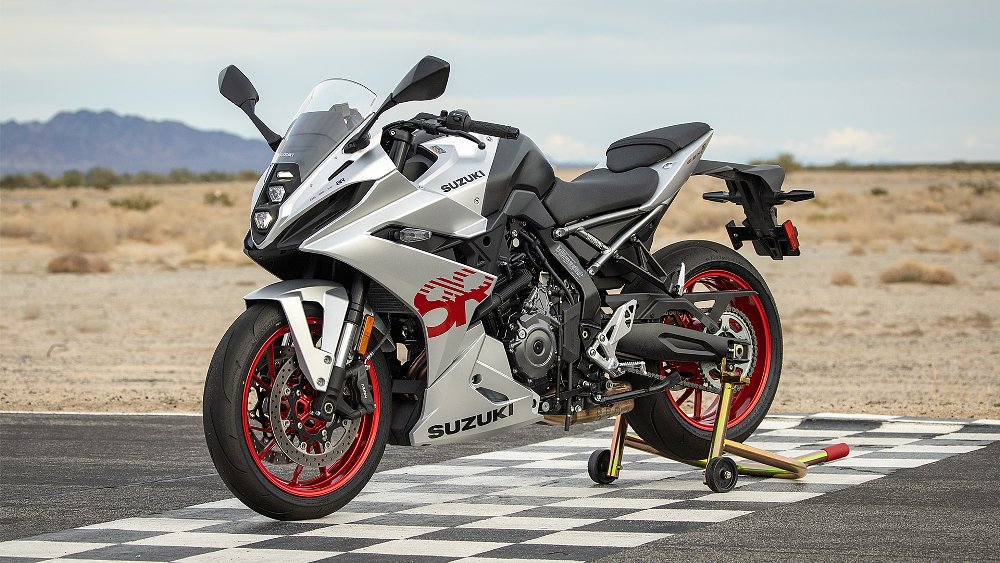
Meet in the middle
Nearly every twin-powered middleweight sport bike offers its own blend of road accommodations and track prowess. Some are more clashing than others. The Yamaha R7’s conservative output suits street riding. Its aggressive rider triangle doesn’t. Conversely, the Aprilia RS 660’s ergonomics are less committed. It’s much more committed when it comes to performance.
By taking the middle road, Suzuki’s new all-arounder suffers no such identity crisis. It compromises in the name of comfort without leaving too much performance on the table. That balance of usability and capability defines the GSX-8R. It also drives Suzuki’s lofty expectations for the model. The firm believes the user-friendly sport bike can outsell both the GSX-8S and V-Strom 800DE. It priced the 8R to do just that.
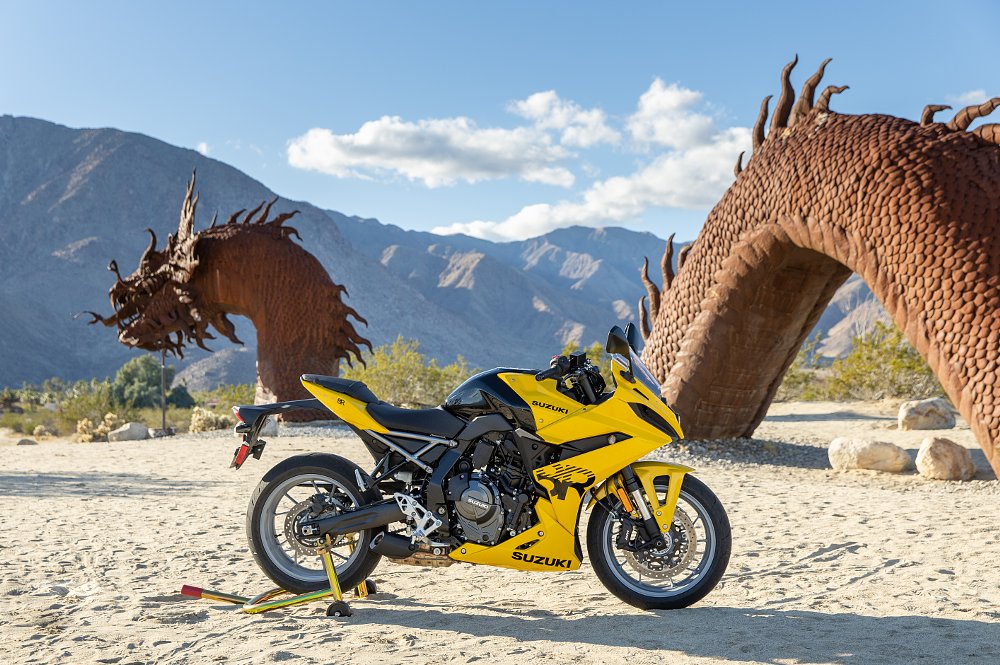
With an MSRP of $9,439 (an oddly specific value), the GSX-8R costs $240 more than a Yamaha YZF-R7 ($9,199) and $2,060 less than the Aprilia RS 660 ($11,499). Again, middle of the road, but as middle-of-the-road things go, the 8R has its pros and cons. That duality was evident in my experience with the bike. Whether or not that qualifies as a good review in Togo-san's eyes is entirely up to him. In my estimation, it qualifies as a fair one.
| 2024 Suzuki GSX-8R | |
|---|---|
| Price (MSRP) | $9,439 |
| Engine | 776 cc, liquid-cooled, eight-valve, parallel twin |
|
Transmission, final drive |
Six-speed, chain |
| Claimed horsepower | 81.8 @ 8,500 rpm |
| Claimed torque | 57.5 foot-pounds @ 6,800 rpm |
| Frame | Steel-tube double backbone |
| Front suspension | Showa 41 mm fork; 5.1 inches of travel |
| Rear suspension | Showa shock, adjustable for spring preload; 5.1 inches of travel |
| Front brake | Dual Nissin four-piston calipers, 310 mm discs with ABS |
| Rear brake | Nissin single-piston caliper, 240 mm disc with ABS |
| Rake, trail | 25 degrees, 4.1 inches |
| Wheelbase | 57.7 inches |
| Seat height | 31.9 inches |
| Fuel capacity | 3.7 gallons |
| Tires | Dunlop Sportmax Roadsport 2; 120/70ZR-17 front, 180/55ZR-17 rear |
| Measured weight | 452 pounds |
| Available | Now |
| Warranty | 12 months |
| More info | suzukicycles.com |








